Cloud integration is the process of configuring multiple application programs to share data in the cloud. In a network that incorporates cloud integration, diverse applications communicate either directly or through third-party software. iPaaS is often used by large business-to-business (B2B) enterprises that need to integrate on-premises applications and data with cloud applications and data.
iPaaS is often used in B2B scenarios when speedy release time is a key requirement. Typically, an IPaaS platform provides pre-built connectors, business rules, maps and transformations that facilitate the development of integration flows and application programming interface (API) management. Some iPaaS solution providers also offer custom development kits for linking legacy applications with mobile and social applications.
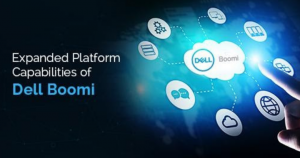 Dell Boomi is a business unit acquired by Dell in 2010 that specializes in cloud-based integration, API management and Master Data Management. Boomi was founded in Berwyn, Pennsylvania and first launched its services in 2007. Dell Boomi AtomSphere is the industry’s first complete, fully on-demand integration service. Dell Boomi AtomSphere makes it possible for companies to integrate their applications, data and trading partners directly from the web, without installing software packages or hardware appliances. Users can securely build, deploy and manage integrations using only a web browser. Build, deploy and manage connections directly from the web. Dell Boomi AtomSphere is an on-demand multi-tenant cloud integration platform for connecting cloud and on-premises applications and data. The platform enables customers to design cloud-based integration processes called Atoms and transfer data between cloud and on-premises applications. Each Atom defines what is necessary for the integration.Dell Boomi is a Software as a Service (SaaS) integration vendor that provides its AtomSphere technology to a host of industry giants, including Salesforce. Dell Boomi AtomSphere is an on-demand multi-tenant cloud integration platform for connecting cloud and on-premises applications and data. The platform enables customers to design cloud-based integration processes called Atoms and transfer data between cloud and on-premises applications. Connect everything, engage everywhere and run anywhere with Boomi’s. your business by making information, interactions and innovations flow faster.
Dell Boomi is a business unit acquired by Dell in 2010 that specializes in cloud-based integration, API management and Master Data Management. Boomi was founded in Berwyn, Pennsylvania and first launched its services in 2007. Dell Boomi AtomSphere is the industry’s first complete, fully on-demand integration service. Dell Boomi AtomSphere makes it possible for companies to integrate their applications, data and trading partners directly from the web, without installing software packages or hardware appliances. Users can securely build, deploy and manage integrations using only a web browser. Build, deploy and manage connections directly from the web. Dell Boomi AtomSphere is an on-demand multi-tenant cloud integration platform for connecting cloud and on-premises applications and data. The platform enables customers to design cloud-based integration processes called Atoms and transfer data between cloud and on-premises applications. Each Atom defines what is necessary for the integration.Dell Boomi is a Software as a Service (SaaS) integration vendor that provides its AtomSphere technology to a host of industry giants, including Salesforce. Dell Boomi AtomSphere is an on-demand multi-tenant cloud integration platform for connecting cloud and on-premises applications and data. The platform enables customers to design cloud-based integration processes called Atoms and transfer data between cloud and on-premises applications. Connect everything, engage everywhere and run anywhere with Boomi’s. your business by making information, interactions and innovations flow faster. CloudHub has been built from the ground up to provide enterprises with a multi-tenant, secure, elastic, and highly available integration platform as a service (iPaaS). This document describes how the underlying mechanisms of the CloudHub platform work to achieve these goals. Manage CloudHub with the Runtime Manager console in the Anypoint Platform. You can also deploy to it directly from Anypoint Studio, via the CloudHub API or via the Anypoint Platform Command Line Interface. CloudHub includes two major components: platform services and the worker cloud. These two components and Runtime Manager work together to run your Mule application in the cloud. CloudHub is designed in such way that it can provide various features like high availability, scalability, intelligent healing, and zero downtime. Mule applications deployed in CloudHub can be easily scalable without any downtime. The Runtime Management console is very well integrated with Anypoint platform. You can use your Anypoint credentials to deploy, upload,or manage your Mule applications. You can deploy and manage your Mule application through this same console. This is also useful for monitoring the platform services. CloudHub shared the set of platform services and API includes CloudHub Insights, Alerting, logging, account management, virtual private cloud/secure data gateway, load balancing, and others.
CloudHub has been built from the ground up to provide enterprises with a multi-tenant, secure, elastic, and highly available integration platform as a service (iPaaS). This document describes how the underlying mechanisms of the CloudHub platform work to achieve these goals. Manage CloudHub with the Runtime Manager console in the Anypoint Platform. You can also deploy to it directly from Anypoint Studio, via the CloudHub API or via the Anypoint Platform Command Line Interface. CloudHub includes two major components: platform services and the worker cloud. These two components and Runtime Manager work together to run your Mule application in the cloud. CloudHub is designed in such way that it can provide various features like high availability, scalability, intelligent healing, and zero downtime. Mule applications deployed in CloudHub can be easily scalable without any downtime. The Runtime Management console is very well integrated with Anypoint platform. You can use your Anypoint credentials to deploy, upload,or manage your Mule applications. You can deploy and manage your Mule application through this same console. This is also useful for monitoring the platform services. CloudHub shared the set of platform services and API includes CloudHub Insights, Alerting, logging, account management, virtual private cloud/secure data gateway, load balancing, and others.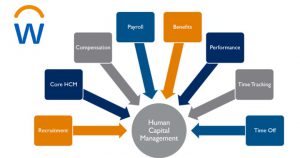 The Workday talent management suite includes tools to improve managing, developing, and rewarding employees. It contains functions perfect for management, including onboarding, goal management, performance management, succession planning, and career and development planning.
The Workday talent management suite includes tools to improve managing, developing, and rewarding employees. It contains functions perfect for management, including onboarding, goal management, performance management, succession planning, and career and development planning.
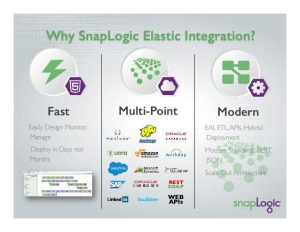 SnapLogic’s Elastic Integration Platform consists of an Integration Cloud, prebuilt connectors called Snaps and a Snaplex for data processing in the cloud or behind the firewall. The company’s products have been referred to as targeting the Internet of Things marketplace for connecting data, applications and devices.
The Integration Cloud approaches big data integration through the following tools:
Designer: An HTML5-based user interface for specifying and building integration workflows, called pipelines.
Manager: Controls and monitors the performance of SnapLogic orchestrations and administers the lifecycle of data and process flows.
Dashboards: Provides visibility into the health of integrations, including performance, reliability, and utilization.
The Snaplex is a self-upgrading, elastic execution grid that streams data between applications, databases, files, social and big data sources. The Snaplex can run in the cloud, behind the firewall and on Hadoop.
SnapLogic’s Elastic Integration Platform consists of an Integration Cloud, prebuilt connectors called Snaps and a Snaplex for data processing in the cloud or behind the firewall. The company’s products have been referred to as targeting the Internet of Things marketplace for connecting data, applications and devices.
The Integration Cloud approaches big data integration through the following tools:
Designer: An HTML5-based user interface for specifying and building integration workflows, called pipelines.
Manager: Controls and monitors the performance of SnapLogic orchestrations and administers the lifecycle of data and process flows.
Dashboards: Provides visibility into the health of integrations, including performance, reliability, and utilization.
The Snaplex is a self-upgrading, elastic execution grid that streams data between applications, databases, files, social and big data sources. The Snaplex can run in the cloud, behind the firewall and on Hadoop.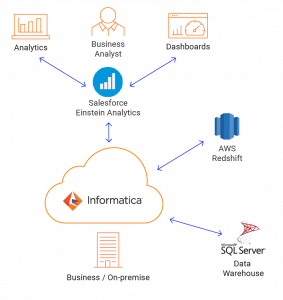 Informatica Intelligent Cloud Services is a next generation iPaaS, which is made up of a growing number of data management products. The productivity of the environment is accelerated by a common user experience across all products, the AI/ML-driven intelligence of the CLAIRE™ engine, and a microservices architecture.
A comprehensive integration strategy must consider various co-existence and integration aspects:
• Data consumption: How applications consume data whether locally and without latency, on demand and interactively from an external data provider or service, via a data hub, or through streaming listeners
• Data and application services: How data is exposed as a service
• Data propagation: How data propagates—for example, via data set synchronization, replication, store and forward or publish/subscribe, streaming, messaging, or event-based propagation via service-oriented API requests.
Informatica Intelligent Cloud Services is a next generation iPaaS, which is made up of a growing number of data management products. The productivity of the environment is accelerated by a common user experience across all products, the AI/ML-driven intelligence of the CLAIRE™ engine, and a microservices architecture.
A comprehensive integration strategy must consider various co-existence and integration aspects:
• Data consumption: How applications consume data whether locally and without latency, on demand and interactively from an external data provider or service, via a data hub, or through streaming listeners
• Data and application services: How data is exposed as a service
• Data propagation: How data propagates—for example, via data set synchronization, replication, store and forward or publish/subscribe, streaming, messaging, or event-based propagation via service-oriented API requests.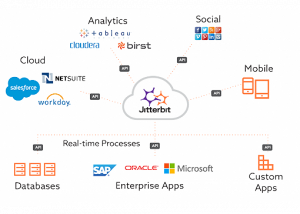 Jitterbit helps businesses make faster, more effective decisions by enabling them to unify and exploit data from all sources. Using the Jitterbit API integration platform companies can rapidly connect SaaS, on-premises and cloud applications and instantly infuse artificial intelligence into any business process.
Jitterbit is a commercial software integration product that facilitates transport between legacy, enterprise, and on-demand computing applications. Jitterbit employs a GUI (graphical user interface) and works with diverse applications including ETL (extract-transform-load), SaaS. The Jitterbit Harmony API Integration Platform is Jitterbit’s modern, multi-tenant, born-in-the-cloud. API integration platform that connects Software as a Service (SaaS), on-premise, cloud, and legacy applications. The Jitterbit Harmony API Integration Platform is powered by Jitterbit’s iPaaS capabilities.
Complete integration lifecycle management. Use Jitterbit Automapper to intelligently map fields. Build powerful integration processes with the workflow designer. Whether you’re a massive enterprise company or a small business, you need an integration strategy. The digital revolution has begun. According to ZDNet, medium- to large-sized business use between 300 and 400 cloud apps. Gone are the days of massive technology suites centrally owned by IT. Today, companies—and departments within those companies—are free to choose the technologies that best fit their business strategies, even as their needs quickly evolve. Companies that don’t manage this explosion of applications, systems, data and devices will not only fail to see real value from all these investments, but they also risk falling behind their competitors.
Jitterbit helps businesses make faster, more effective decisions by enabling them to unify and exploit data from all sources. Using the Jitterbit API integration platform companies can rapidly connect SaaS, on-premises and cloud applications and instantly infuse artificial intelligence into any business process.
Jitterbit is a commercial software integration product that facilitates transport between legacy, enterprise, and on-demand computing applications. Jitterbit employs a GUI (graphical user interface) and works with diverse applications including ETL (extract-transform-load), SaaS. The Jitterbit Harmony API Integration Platform is Jitterbit’s modern, multi-tenant, born-in-the-cloud. API integration platform that connects Software as a Service (SaaS), on-premise, cloud, and legacy applications. The Jitterbit Harmony API Integration Platform is powered by Jitterbit’s iPaaS capabilities.
Complete integration lifecycle management. Use Jitterbit Automapper to intelligently map fields. Build powerful integration processes with the workflow designer. Whether you’re a massive enterprise company or a small business, you need an integration strategy. The digital revolution has begun. According to ZDNet, medium- to large-sized business use between 300 and 400 cloud apps. Gone are the days of massive technology suites centrally owned by IT. Today, companies—and departments within those companies—are free to choose the technologies that best fit their business strategies, even as their needs quickly evolve. Companies that don’t manage this explosion of applications, systems, data and devices will not only fail to see real value from all these investments, but they also risk falling behind their competitors.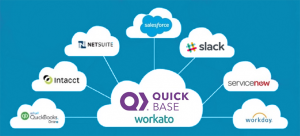 Workato is an iPass tool, it will automate business across cloud apps,on-premise apps and automated integration solves the problem of data in manual workflows.Workato is an award-winning cloud automation and integration platform with enterprise-grade capabilities that is trusted by over 21,000 businesses. Create integration recipes between all your cloud and on-premise apps. Intelligent automation fundamentally changes how businesses and individuals work in thbreakneck pace of a digital first world. Status quo is no longer acceptable. You need to stay competitive and innovate or you’ll quickly fall behind.
Even in our own business we are not immune to the pressure to innovate faster. That’s why we look to automate everything. We believe that automating throughout the business is critical to growth and we’ve done that internally at Workato.
Workato is an iPass tool, it will automate business across cloud apps,on-premise apps and automated integration solves the problem of data in manual workflows.Workato is an award-winning cloud automation and integration platform with enterprise-grade capabilities that is trusted by over 21,000 businesses. Create integration recipes between all your cloud and on-premise apps. Intelligent automation fundamentally changes how businesses and individuals work in thbreakneck pace of a digital first world. Status quo is no longer acceptable. You need to stay competitive and innovate or you’ll quickly fall behind.
Even in our own business we are not immune to the pressure to innovate faster. That’s why we look to automate everything. We believe that automating throughout the business is critical to growth and we’ve done that internally at Workato.
Cloud migration is the process of moving data, applications or other business elements to a cloud computing environment. However, a cloud migration could also entail moving data and applications from one cloud platform or provider to another a model known as cloud-to-cloud migration. With growing business demand, IT capacity for innovation is decreasing. Infrastructure is all packed up with the applications.
Our Cloud Migration services help in moving infrastructure , applications and business processes of an organization to cloud, thus freeing the infrastructure. Cloud migration is necessary to bridge the gap in business demand and IT capacity. Cloud Migration Services identify areas of risk and opportunities for improving the performance and availability of critical business functions.
API management is the process of overseeing Application Programming Interfaces in a secure, scalable environment. The goal of API management is to allow organizations that either publish or utilize an API to monitor the interface lifecycle and ensure the needs of developers and applications using the API are being met. API management needs may differ from organization to organization, but API management itself encompasses some basic functions, including security, monitoring, and version control. API management has become increasingly important due to businesses growing dependency on APIs, a significant rise in the number of APIs they depend on and the administrative complexities APIs introduce.
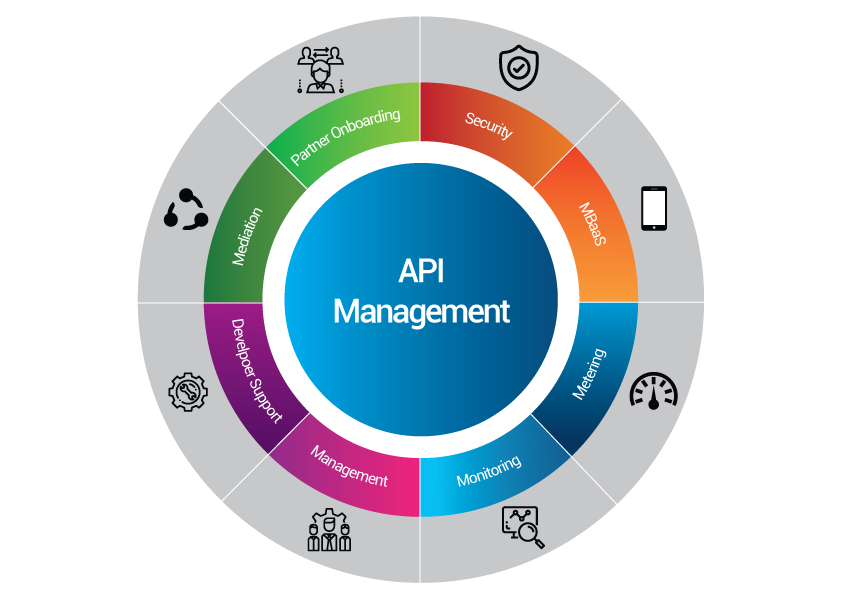
The requirements and process of building and managing APIs are different than most other applications. In order to be utilized properly, APIs require strong documentation, increased levels of security, comprehensive testing, routine versioning, and high reliability. Because these requirements often go beyond the scope of the software-based projects organizations typically run, the use of API management software has become popular.
 Software as a service (or SaaS) is a way of delivering applications over the Internet-as a service. Instead of installing and maintaining software, you simply access it via the Internet, freeing yourself from complex software and hardware management.Software as a service(SaaS) is a software distribution model in which a third-party provider hosts applications and makes them available to customers over the Internet. SaaS is one of three main categories of cloud computing, alongside infrastructure as a service (IaaS) and platform as a service (PaaS).
Software as a service (or SaaS) is a way of delivering applications over the Internet-as a service. Instead of installing and maintaining software, you simply access it via the Internet, freeing yourself from complex software and hardware management.Software as a service(SaaS) is a software distribution model in which a third-party provider hosts applications and makes them available to customers over the Internet. SaaS is one of three main categories of cloud computing, alongside infrastructure as a service (IaaS) and platform as a service (PaaS).
Software development is different for SaaS companies. Product cycles are shorter, sustaining costs are dramatically reduced, and the technology used must be more current. Existing software companies with development staff more comfortable with client/server than modern web technology may need to assist their development personnel in improving their ability to do multi-tenant, web-centric software.
Bad software architecture is so much more apparent in SaaS products. On-premise products that run on dedicated servers or VMs that support a hundred or so users may not scale well when run with thousands simultaneously. Even if horizontal scaling is possible, inefficient use of resources can raise the cost of providing SaaS services above the target of 10% of the Monthly Reoccurring Revenue (MRR).Developers must also be aware of the latency issues that can cause poor performance on public clouds if proper optimization is not done.Security must be fundamental to the architecture given the nature of shared resources of many clients all behind the same firewall.
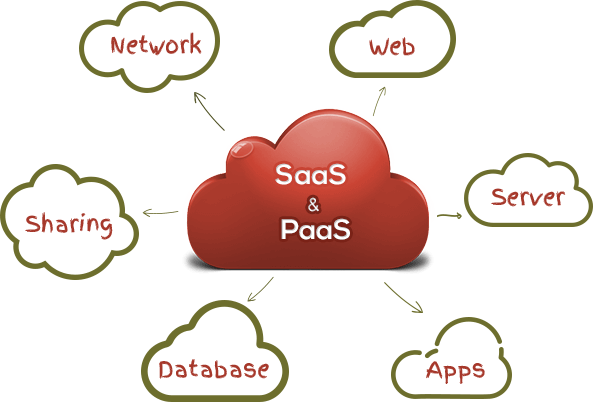
We at Mercurous Software Solutions work closely with our clients to work on and develop a digital strategy and a road map to align with the overall business strategy. We understand that there is not a one-size-fits-all plan for Digital Transformation and therefore bring with is processes and methods that help organizations to prepare a road map that fulfills and maximizes their investments.
We at Mercurous Software Solutions, take our clients business’ vision, objectives, and strategy to prepare blueprint to operate in the digital and online space to build digital enterprise capabilities that leverage growth and generate new economic value in the future. We work with our clients to prepare a well-designed digital roadmap that :
⦁ Assists to demonstrate what is being delivered.
⦁ Helps you assess if the project is worth delivering.
⦁ Highlights how it will be implemented, making the strategy achievable, tangible and more credible.
⦁ Makes it easy to see when it is delivered through a time frame.
⦁ Our digital road map defined by the digital strategy.
⦁ Includes achievable, realistic, and major milestones and associated streams and projects.
⦁ Agile and nimble to adapt and evolve to meet changes.
Our goals include
⦁ Maximizing the return on investment of your products and services
⦁ Improving efficiency, introducing best practices and reducing the cost
⦁ Improving all touch points enriching customer and employee experiences
⦁ Putting in place a proactive cyber security strategy
⦁ Management of changing customer preferences in the digital landscape.